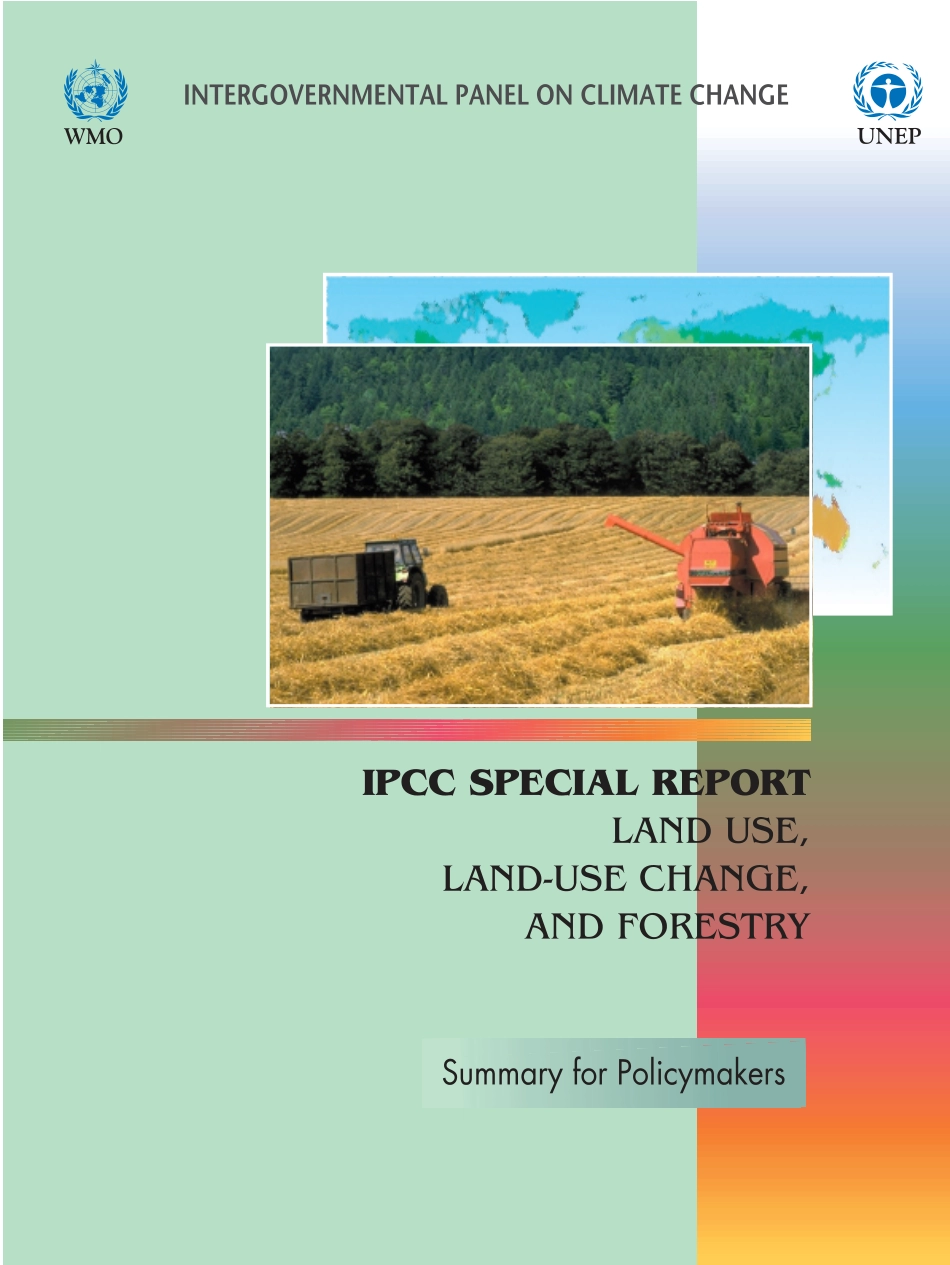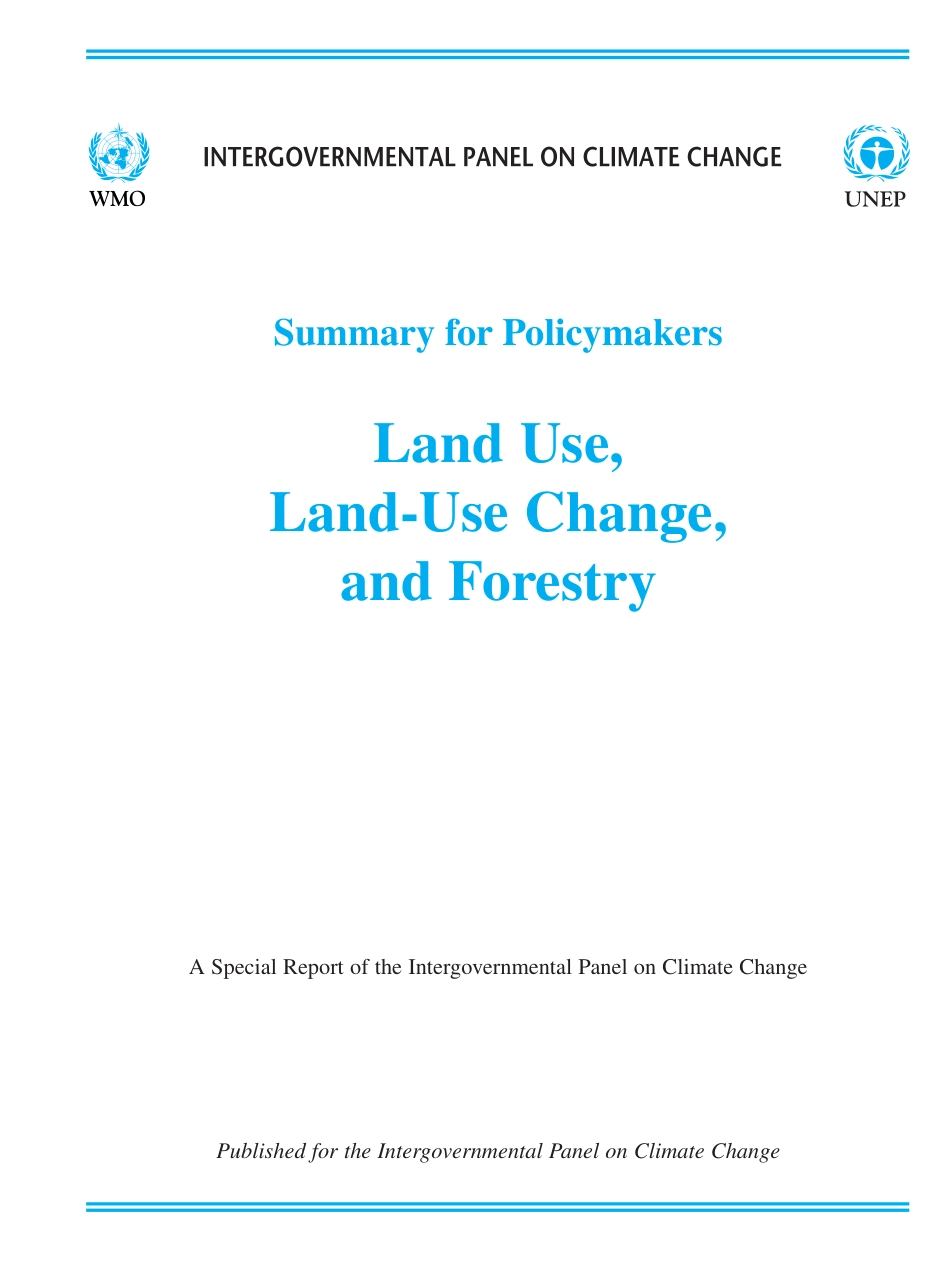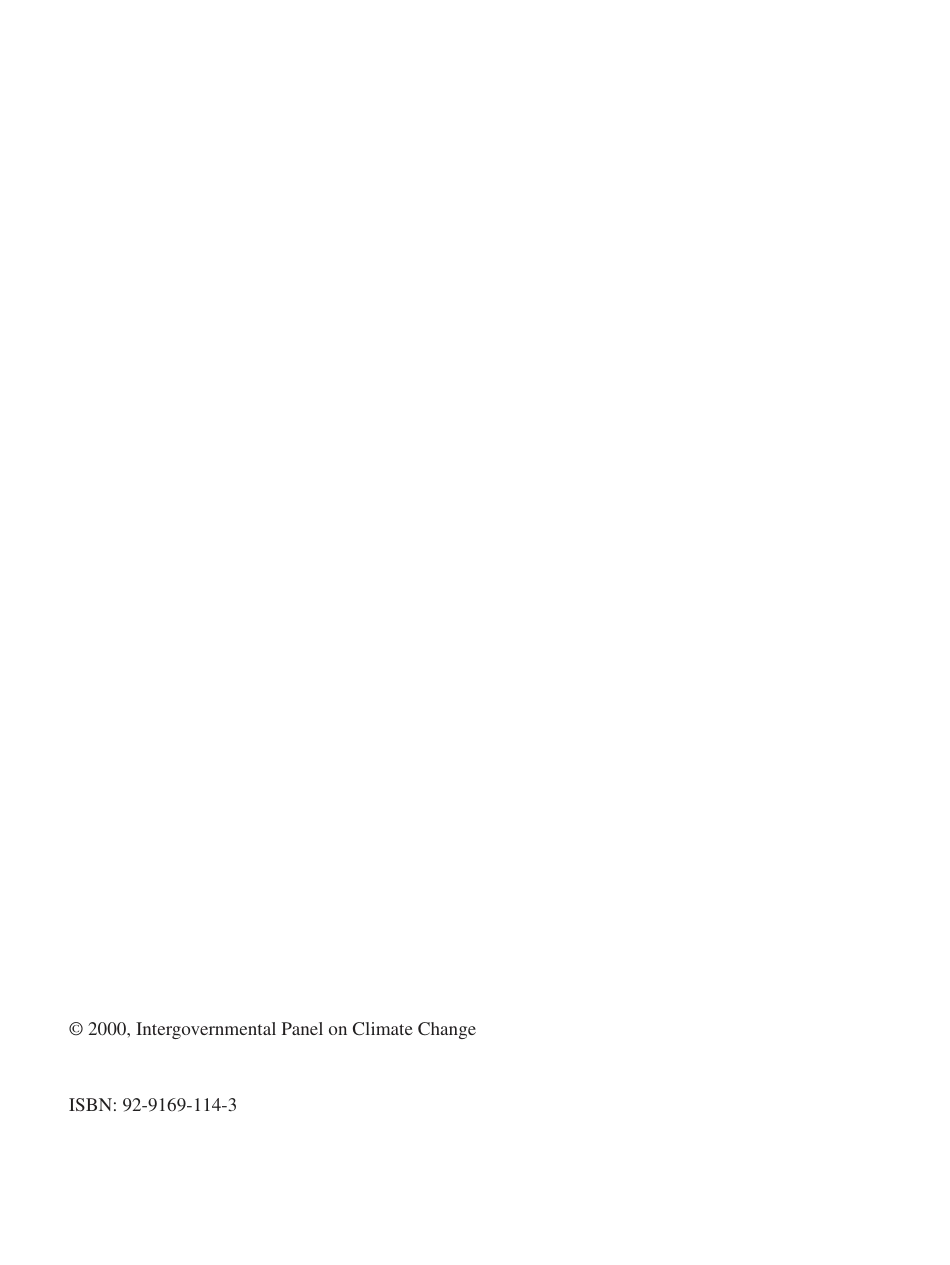Summary for PolicymakersLand Use,Land-Use Change,and ForestryA Special Report of the Intergovernmental Panel on Climate ChangePublished for the Intergovernmental Panel on Climate Change© 2000, Intergovernmental Panel on Climate ChangeISBN: 92-9169-114-3ContentsForeword . . . . . . . . . . . . . . . . . . . . . . . . . . . . . . . . . . . . . . . . . . . . . . . . . . . . . . . . . . . . . . . . . . . . . . . . . . . . . . . . . . .vPreface . . . . . . . . . . . . . . . . . . . . . . . . . . . . . . . . . . . . . . . . . . . . . . . . . . . . . . . . . . . . . . . . . . . . . . . . . . . . . . . . . . . . .vii1.Introduction . . . . . . . . . . . . . . . . . . . . . . . . . . . . . . . . . . . . . . . . . . . . . . . . . . . . . . . . . . . . . . . . . . . . . . . . . . . .3Part I2.Global Carbon Cycle Overview . . . . . . . . . . . . . . . . . . . . . . . . . . . . . . . . . . . . . . . . . . . . . . . . . . . . . . . . . . . . .3Part II3.Issues Associated with Definitions . . . . . . . . . . . . . . . . . . . . . . . . . . . . . . . . . . . . . . . . . . . . . . . . . . . . . . . . . . .53.1Forests, Afforestation, Reforestration, and Deforestation . . . . . . . . . . . . . . . . . . . . . . . . . . . . . . . . . . . . . . .53.2Additional Activities . . . . . . . . . . . . . . . . . . . . . . . . . . . . . . . . . . . . . . . . . . . . . . . . . . . . . . . . . . . . . . . . . . .84.Carbon Accounting . . . . . . . . . . . . . . . . . . . . ....



